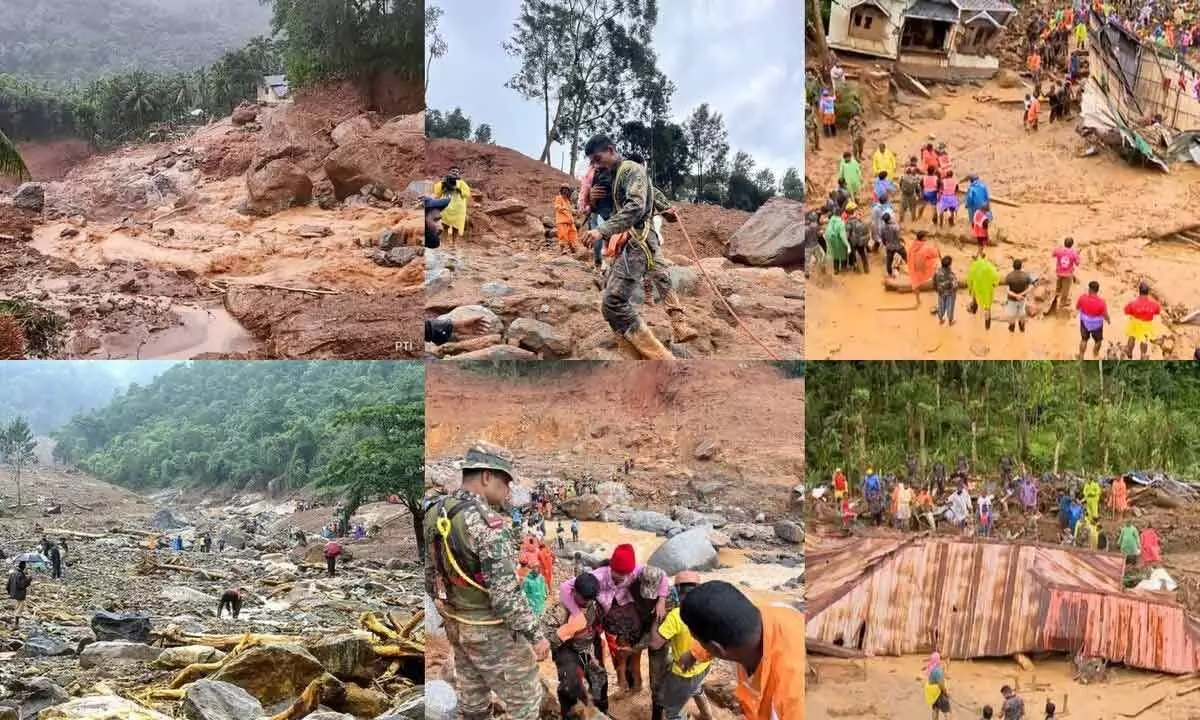UN climate models wide off mark

Underestimate rainfall trends in northwestern India by about 70%: Study
New Delhi: Global state-of-the-art models, featuring in the UN's IPCC (Intergovernmental Panel on Climate Change) reports on climate change, consistently underestimate rainfall trends in northwestern India by about 70 per cent, according to a study published in the journal Geophysical Research Letters. The study also finds relevance in the context of the landslides in Wayanad, Kerala, with winds and the warming over the Arabian Sea related to the southern region, said co-author Raghu Murtugudde.
While the models might be good at predicting Earth's temperature response to global warming, they are not good at accurately simulating how heat from the Sun gets exchanged between land and air, he explained. "Therefore, owing to such inadequacies, the models produce a weaker rainfall response, thereby failing to predict/estimate heavy rain over northwest India and Pakistan. This is bad news for this vulnerable and sensitive region," Murtugudde, an earth system scientist and IIT-Bombay professor, told PTI. The Coupled Model Intercomparison Project (CMIP) is a global collaborative framework aimed at improving knowledge of climate change and provides freely available data for Earth System research. Results from CMIP models feature in the Intergovernmental Panel on Climate Change (IPCC) assessment reports. The project's Phase Six (CMIP6) was initiated in 2014 to fill knowledge gaps of CMIP5 and address new challenges emerging in climate modelling. Results of simulations done by the CMIP6 models are being evaluated by scientists for their consistency with actual weather trends, including those of the Indian monsoon.
"The findings (of this study) reveal a consistent underestimation by the state-of-art climate models, with an approximately 70 per cent lower intensity than in the observed increasing trend in rainfall over the northwestern edge of the Indian summer monsoon," the authors wrote. The 24 CMIP6 models that the researchers analysed could not accurately reproduce the summer low-level jet (of air) in response to the warming in the Middle East during spring season. The region's warming is known to trigger heavy rainfall over the northwestern edge of the Indian summer monsoon. "Middle East warming is done fairly well in many models since models are best at capturing temperature response to increased greenhouse gases, the primary driver of climate change," Murtugudde said. "In the real world though, the Middle East warming produces a low-pressure centre and models don't do this well, because they are not doing proper (heat) energy exchange between the land and the atmosphere," he added. Part of the Sun's incoming heat energy is absorbed by the air, while the land absorbs the rest and is released later when temperatures come down. As a result of the models' deficiencies, they fail to produce a pressure gradient between the Middle East and the tropics, because of which they are not able to predict how the winds shift over the Arabian Sea as seen in nature, Murtugudde said.
"It is this jumping around (of winds) that is being driven by Middle East warming and model projections are simply unreliable," he said. The underestimates in rainfall intensity can potentially increase uncertainties around the risk of flooding under climate change, thereby impacting the reliability of projections, according to the study's authors. Going forward, Murtugudde suggested that India needs to develop a decadal prediction system for planning instead of the expensive (CMIP6) projections. "Projections are based on scenarios but decadal predictions are extensions of weather and climate forecasts.
They are the best way to anticipate what will happen in the coming years and plan for multiple sectors – agriculture, water, energy, health, transportation and land use,"
Murtugudde said. More than 200 people have been killed in the landslides that struck Wayanad three days ago. The toll is expected to rise with many people still missing and rescue workers racing against time to trace them.














